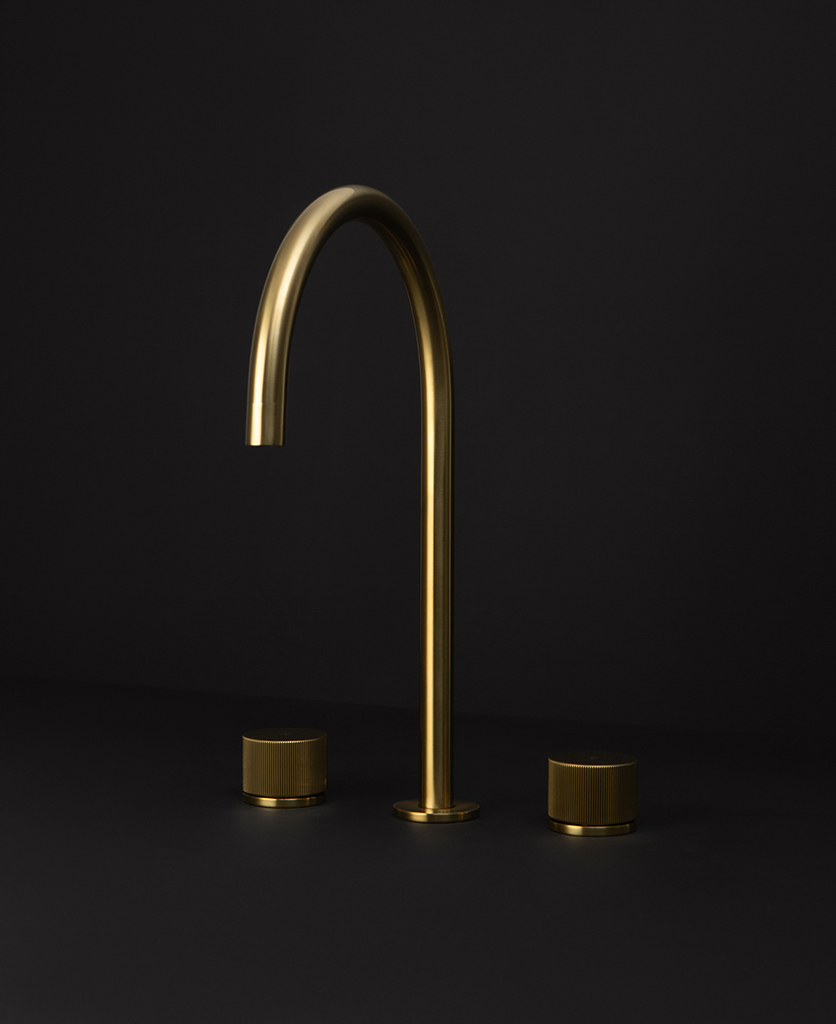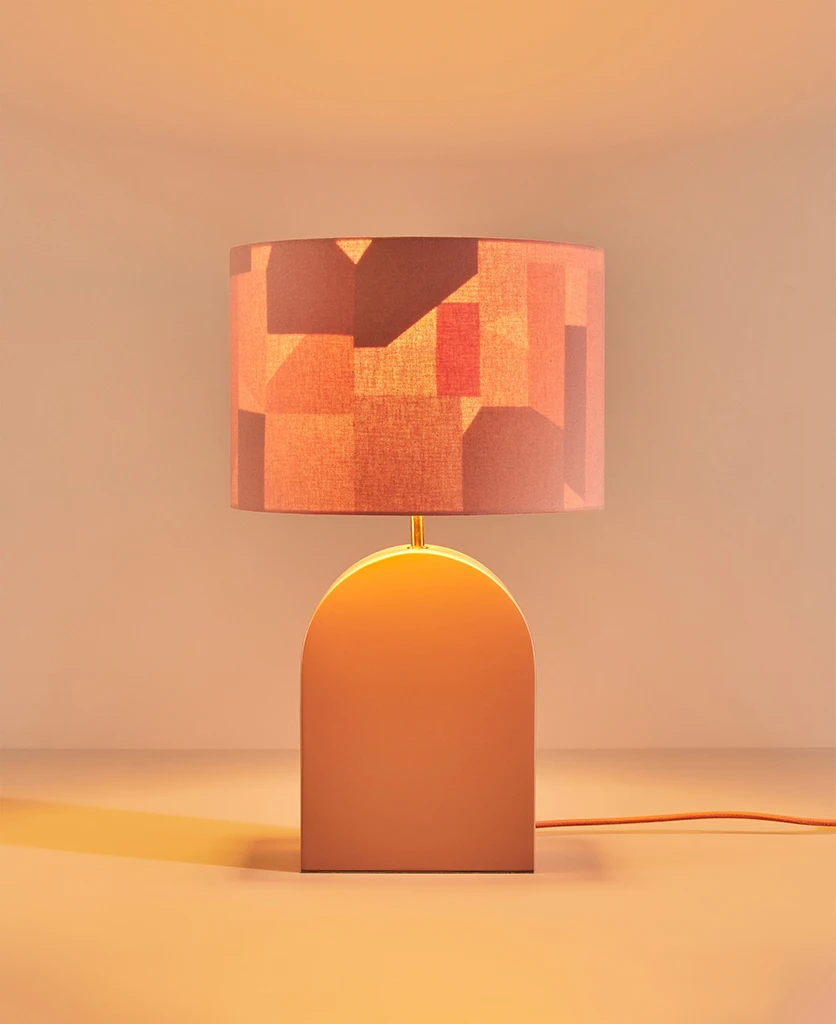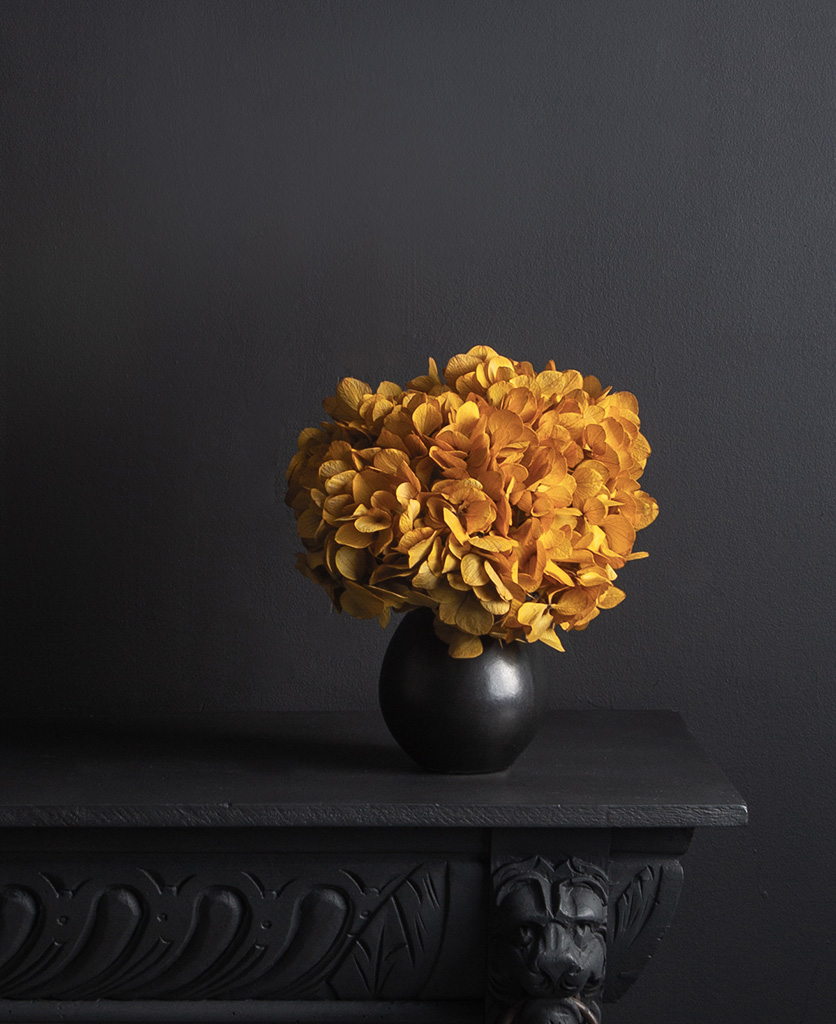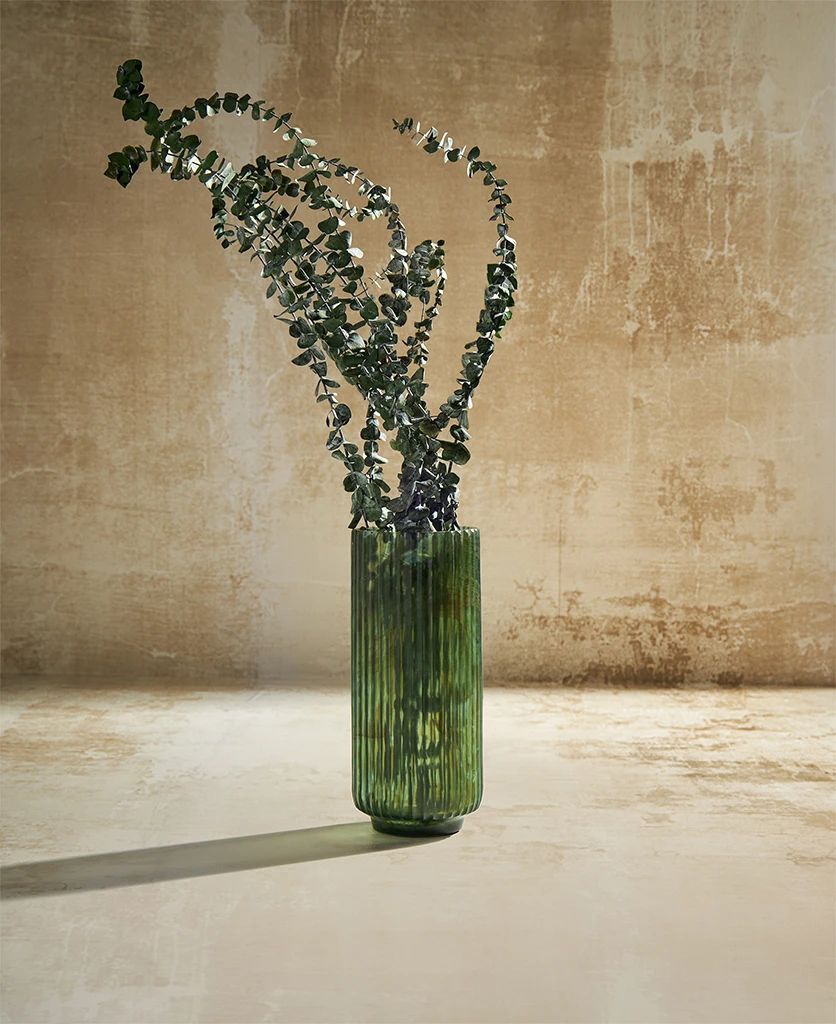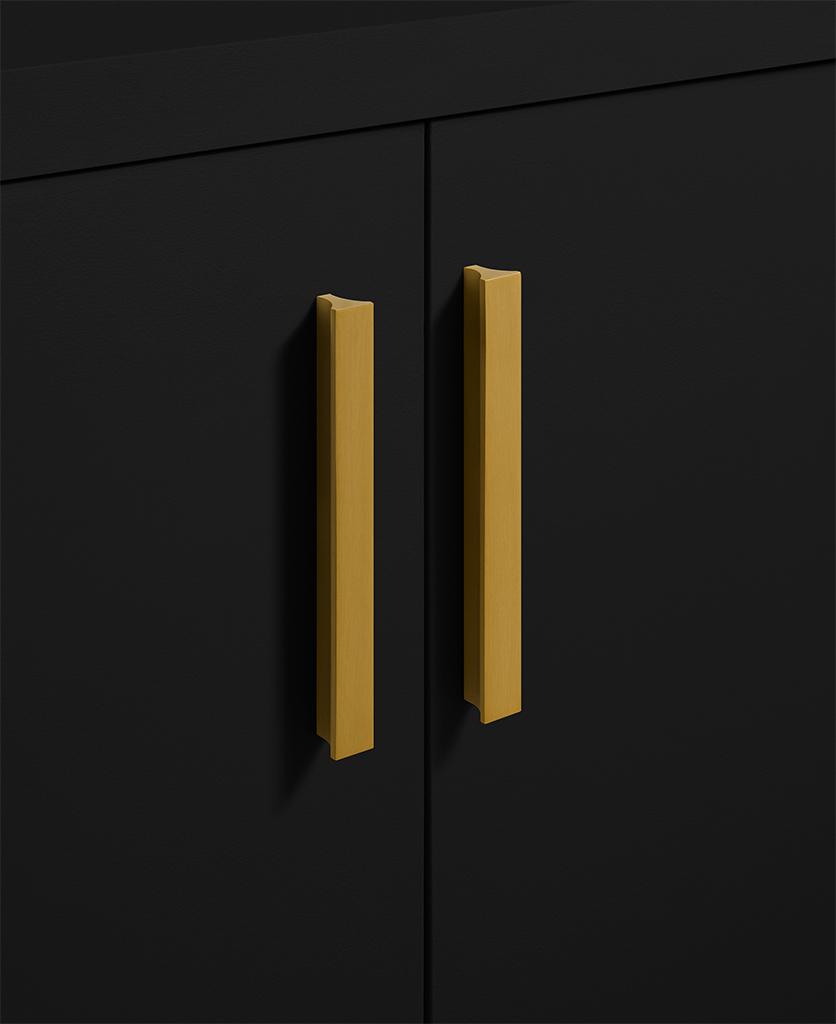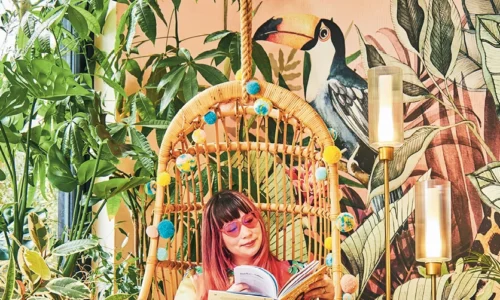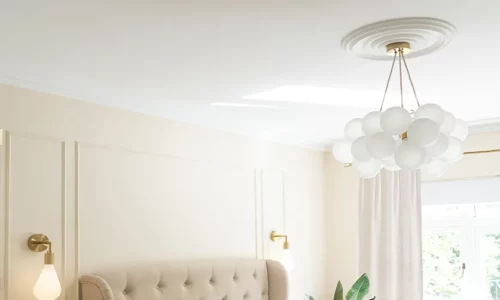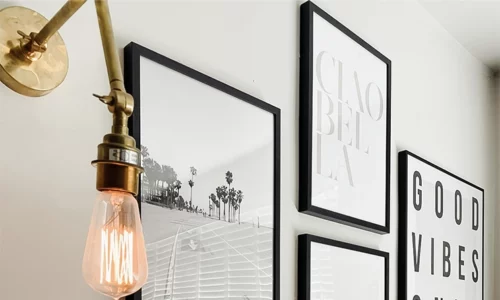How Wunsch Cabinetmakers designed and created this eco-friendly, 70s style kitchen
Designing a playful and vibrant family space was the brief for this Station Road kitchen, and the team at Wunsch Cabinetmakers delivered, using naturally dyed, eco-friendly materials before accessorising the 70s style yellow and green palette with gold accents.
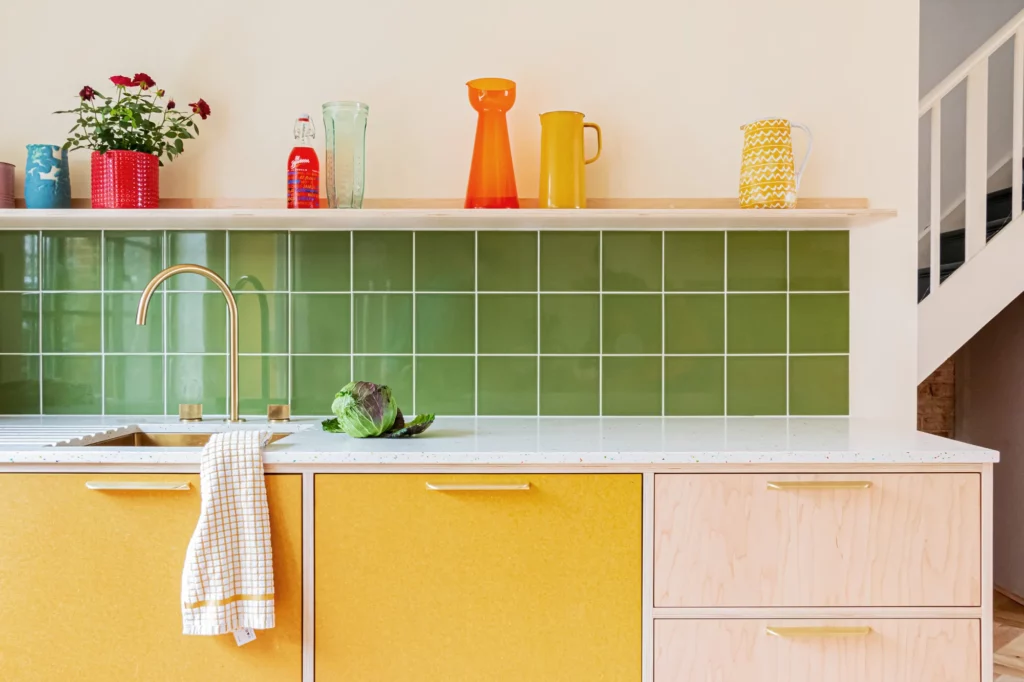
“Each project is unique and provides a new challenge to overcome, which keeps it exciting for us!”
Jamie Field, Wunsch
Creating bespoke, handcrafted kitchens and furniture in their Lewes workshop, Wunsch are at the forefront of designing unique spaces that cater to their clients’ lifestyles. Custom-building everything from the ground up, they scrutinise each detail, from selecting life-long materials to planning layouts that work.
Below, we caught up with the creatives behind the design to find out more, from the recycled plastic worktop to the considered layout and the brushed gold finishing touches.
Which materials did you choose for the kitchen and why?
Our clients were keen on using sustainable and innovative materials, so we chose Valchromat (made from wood fibres and coloured with organic dyes) for its subtle texture and rich yellow colour.
We paired this with the Garnica maple-faced plywood (an alternative to Russian birch plywood) for its strength in the construction of the cabinets and its attractiveness as door fronts.
Perhaps the most interesting material is the Polygood 100% recycled plastic worktop. This product is made from recycled fridges and single-use cutlery, giving it its amazing colourful flecks! We love both its stunning appearance and its unusual backstory.
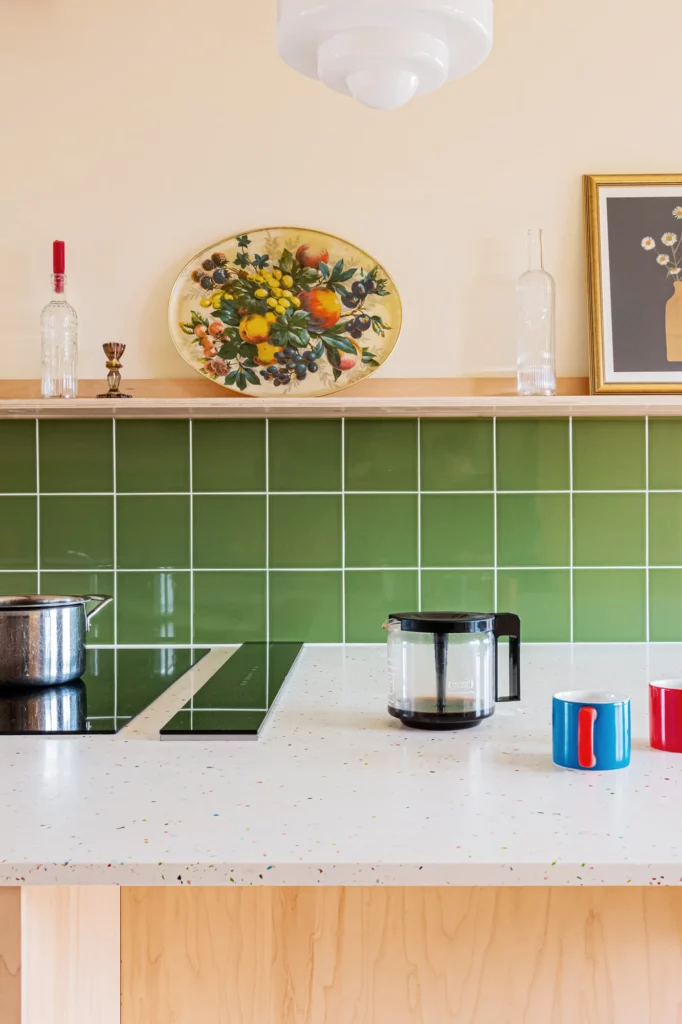
How did you land on the colour palette for the project – it feels like a unique take on a 70s style kitchen?
It evolved very naturally in collaboration with our client. They came into the process with an open mind but a clear idea of what they did and didn’t like. Part of their initial brief was that they wanted the kitchen to feature a mixture of wood veneer and blocks of solid colour.
They settled on the turmeric-yellow Valchromat early on as they loved the colour. We picked the maple-faced Garnica plywood because it has a lovely subtle pink hue that worked nicely with the yellow.
The client sourced the green tiles, which we think are the perfect addition to complete the colour scheme – bold yet still with a familiar homely warmth.
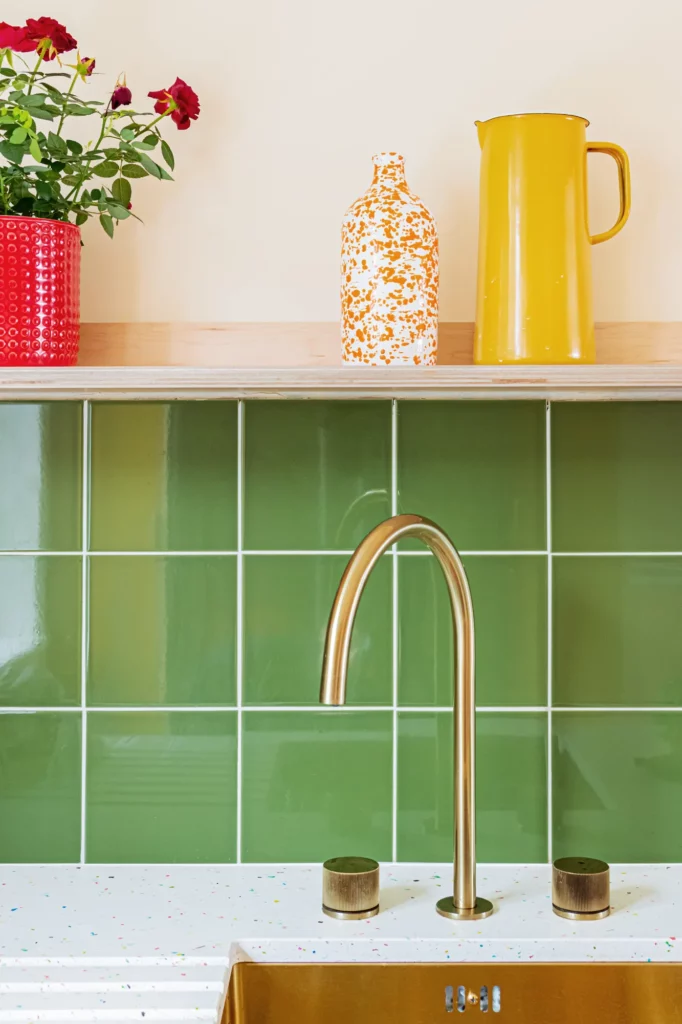
What made brass accessories the right choice to complement the design?
There’s currently a trend for handleless kitchens in this modern in-frame style. We all love those kitchens, but we wanted to do something a little different to set this kitchen apart. Handles are a great opportunity to introduce another material to the design palette, and they help to lift the overall design – this was the case with this project.
Once we introduced brushed brass to the palette with the handles, everything seemed to come alive. This choice informed the sink, and the beautiful Dowsing & Reynolds reeded tap was the perfect finishing touch for the kitchen.
How did you create that balance between designing a functional space that also looks great?
Most importantly, everything has to serve a purpose in our kitchen design. In this space, we stuck to the age-old kitchen triangle principle – the cooking area, fridge, and sink should all be close (but not too close!) and allow for simplicity in use. The central peninsula allows whoever is cooking to enjoy the view from the back of the house whilst socialising with family and friends.
In terms of looking good, we generally try to keep the kitchen cabinetry low, and in this room, we created plenty of storage without the clutter of wall-hung cabinets.
Light touch floating shelves and the single feature wall cabinet maintain the openness of the space, whilst the unused chimney breast allowed us to fit a large feature pantry without encroaching too much into the floor plan.

